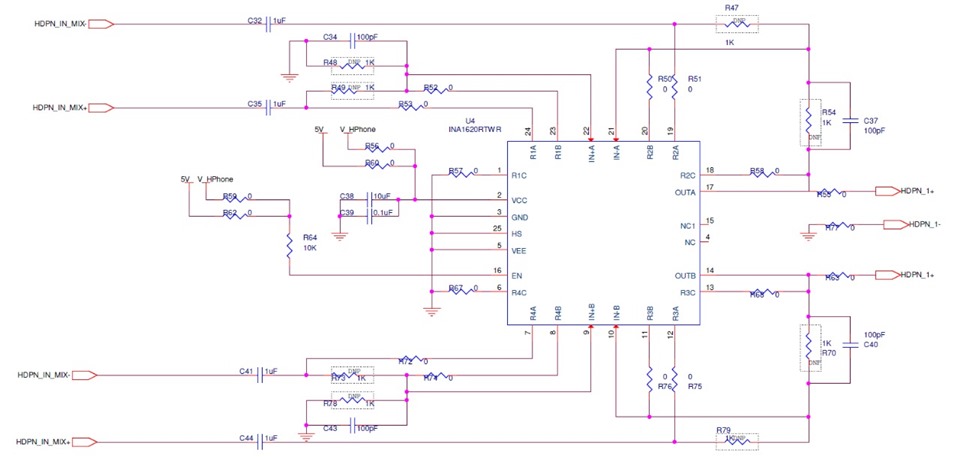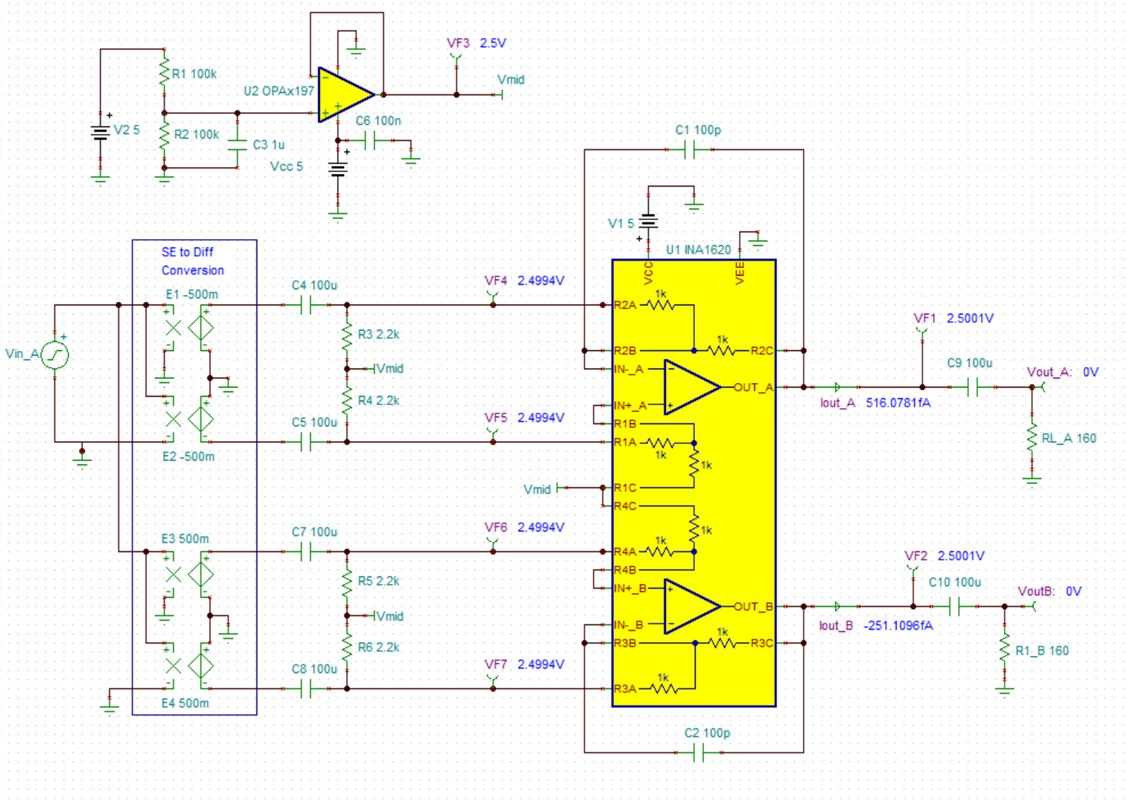
We are planing to drive a Head phone as per specification attached with the above circuit. Could you please suggest is the values are mentioned in the schematic able to drive the Head phone.
please suggest what are the changes required to drive the Headphone.the input to INA1620 is from audio signal driven by Laptop audio output signal.





